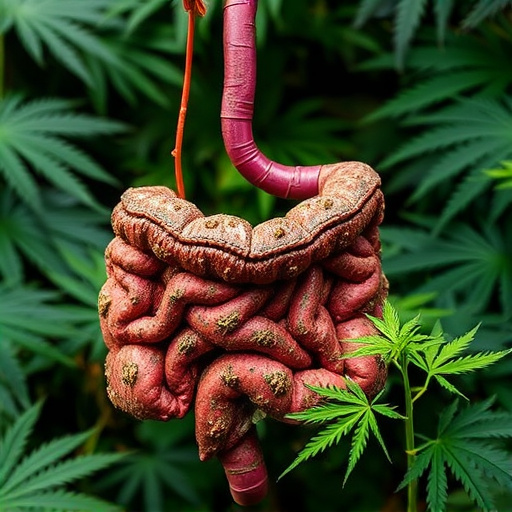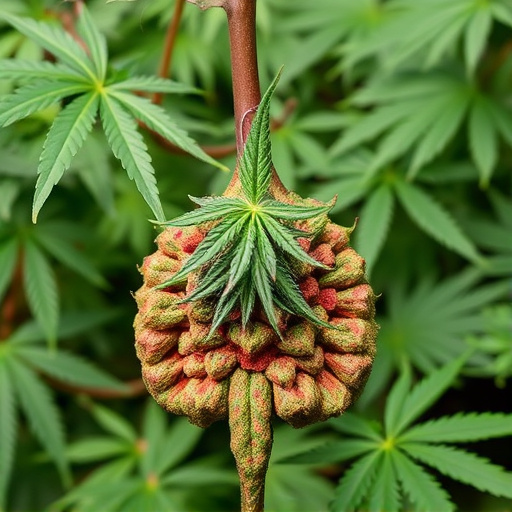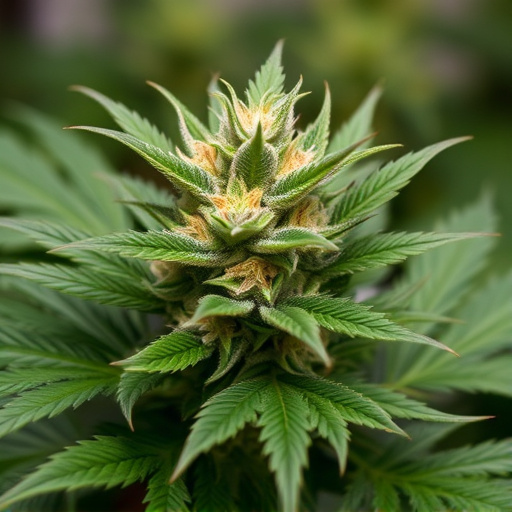Landrace cannabis strains, with ancient origins in regions like the Middle East and Thailand, offer tailored therapeutic benefits for Crohn's disease due to their unique genetic and chemical profiles. Middle Eastern strains high in CBD reduce inflammation, while Thai strains alleviate stress and anxiety, common symptoms of Crohn's. Understanding these landraces is crucial for personalizing treatments based on individual needs, with research highlighting their potential for managing inflammation, abdominal pain, and digestive system healing. Patients often seek CBD-rich varieties or soothing landrace strains as a complement to traditional medicine for improved quality of life.
Landrace strains, with their deep cultural and genetic roots, offer unique therapeutic potential, especially for managing chronic conditions like Crohn’s disease. This article explores the significance of preserving and understanding landrace cannabis strains. We delve into their origins, distinct characteristics, and how they can impact Crohn’s symptoms, improving quality of life. From historical usage to modern research, these ancient strains provide valuable insights into the diverse benefits of cannabis, shaping future treatments and patient care.
- Understanding Landrace Strains: Origins and Uniqueness
- The Impact on Chronic Conditions: Crohn's Disease as a Case Study
- Enhancing Quality of Life: Benefits and Future Perspectives
Understanding Landrace Strains: Origins and Uniqueness

Landrace strains are a unique and important category in the world of cannabis, offering distinct therapeutic benefits tailored to specific conditions, including Crohn’s disease. These strains have deep historical roots and are naturally occurring, having evolved over centuries in their respective regions. Each landrace strain possesses genetic characteristics that make it exceptionally well-suited for addressing regional environmental and human factors, resulting in unique chemical profiles with potent effects.
For instance, Middle Eastern landrace strains like Hashish or Afghan Kush are renowned for their high CBD content, which has been shown to reduce inflammation and pain, making them potentially beneficial for Crohn’s disease patients. Similarly, Thai strains known for their uplifting and invigorating effects can help manage stress and anxiety, common symptoms associated with the condition. Understanding the origins and unique attributes of these landrace strains is crucial for cannabis enthusiasts and medical professionals alike in tailoring treatments to individual needs.
The Impact on Chronic Conditions: Crohn's Disease as a Case Study

Cannabis has long been used for its therapeutic properties, and one of the key aspects that makes landrace strains significant is their potential to treat chronic conditions like Crohn’s disease. Landraces are cannabis varieties that have been grown and selected over generations in specific geographic regions, preserving unique genetic traits. In the case of Crohn’s disease, a chronic inflammatory condition affecting the gastrointestinal tract, certain landrace strains have shown promise in alleviating symptoms and providing some patients with much-needed relief.
Research suggests that specific cannabis strains can help manage Crohn’s disease by reducing inflammation, easing abdominal pain, and promoting healing in the digestive system. The active compounds in these landraces, particularly cannabidiol (CBD) and tetrahydrocannabinol (THC), have anti-inflammatory and analgesic effects. As such, patients often turn to CBD-rich strains or specific varieties known for their soothing properties to complement traditional medical treatments, aiming to improve their quality of life and overall well-being.
Enhancing Quality of Life: Benefits and Future Perspectives

Cannabis landrace strains offer significant potential in enhancing the quality of life for various conditions, including chronic inflammatory disorders like Crohn’s disease. These ancient cannabis varieties have adapted over time to specific geographic regions and possess unique chemical profiles, often with higher levels of CBD (cannabidiol) relative to THC (tetrahydrocannabinol). This balance makes them particularly appealing for medicinal use without the psychotropic effects associated with high-THC strains.
The future perspectives for landrace strains in Crohn’s disease management are promising. Research suggests that specific landraces may help reduce inflammation, alleviate pain, and promote healing in gastrointestinal tissues. As our understanding of cannabis continues to evolve, targeted studies on these natural varieties could lead to more effective, safe, and personalized treatments, improving the overall well-being of patients with chronic conditions like Crohn’s disease.
Landrace strains of cannabis hold immense potential in managing chronic conditions like Crohn’s disease, offering both symptomatic relief and potentially mitigating inflammation. As research continues to explore the therapeutic benefits of these ancient strains, particularly in the context of cannabis for Crohn’s disease, we are witnessing a revolution in healthcare. Understanding and preserving landraces ensures that future generations have access to a diverse range of cannabis strains, enhancing quality of life and providing alternatives for those seeking natural solutions.














